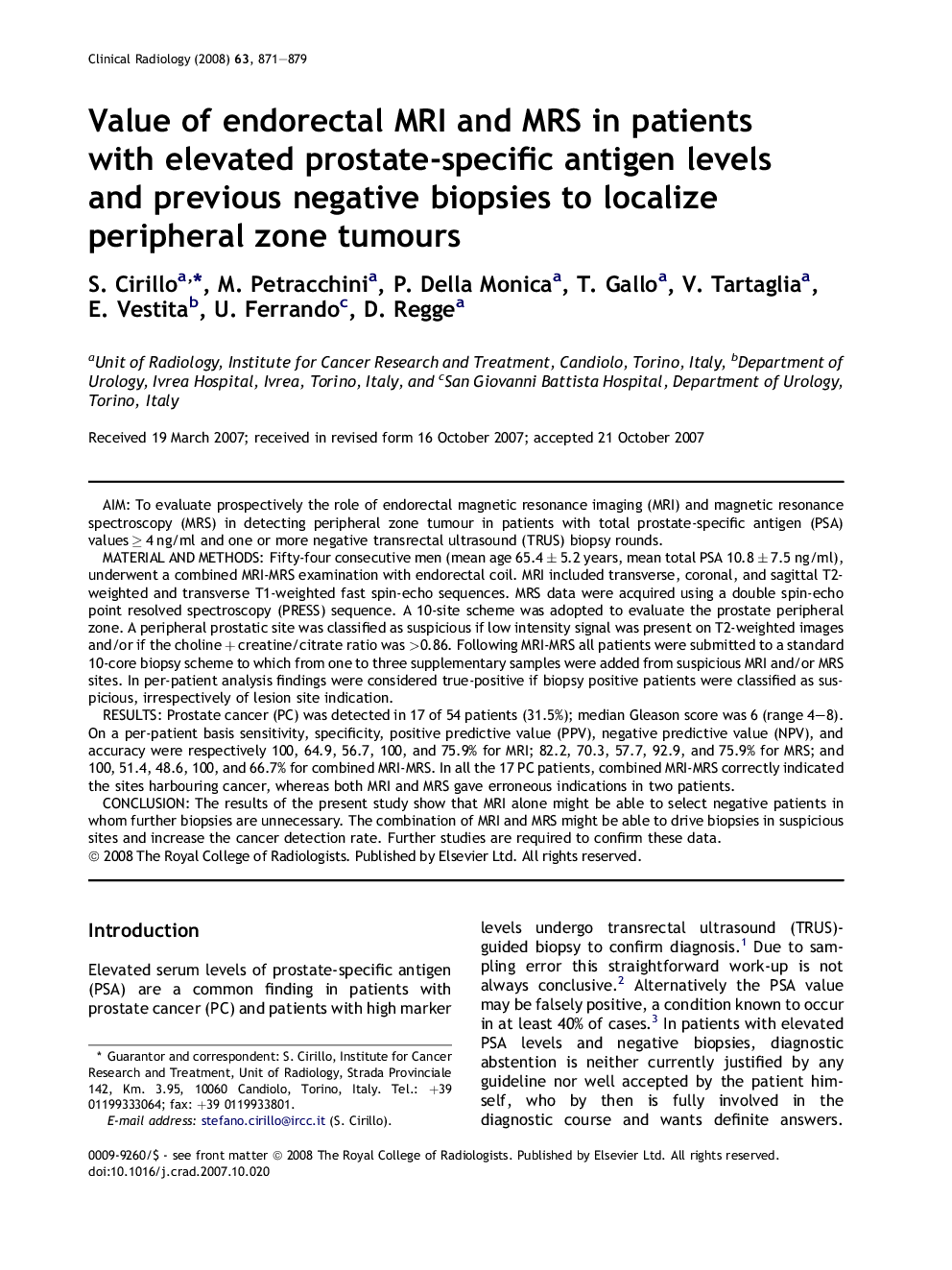| Article ID | Journal | Published Year | Pages | File Type |
|---|---|---|---|---|
| 3984068 | Clinical Radiology | 2008 | 9 Pages |
AimTo evaluate prospectively the role of endorectal magnetic resonance imaging (MRI) and magnetic resonance spectroscopy (MRS) in detecting peripheral zone tumour in patients with total prostate-specific antigen (PSA) values ≥ 4 ng/ml and one or more negative transrectal ultrasound (TRUS) biopsy rounds.Material and methodsFifty-four consecutive men (mean age 65.4 ± 5.2 years, mean total PSA 10.8 ± 7.5 ng/ml), underwent a combined MRI-MRS examination with endorectal coil. MRI included transverse, coronal, and sagittal T2-weighted and transverse T1-weighted fast spin-echo sequences. MRS data were acquired using a double spin-echo point resolved spectroscopy (PRESS) sequence. A 10-site scheme was adopted to evaluate the prostate peripheral zone. A peripheral prostatic site was classified as suspicious if low intensity signal was present on T2-weighted images and/or if the choline + creatine/citrate ratio was >0.86. Following MRI-MRS all patients were submitted to a standard 10-core biopsy scheme to which from one to three supplementary samples were added from suspicious MRI and/or MRS sites. In per-patient analysis findings were considered true-positive if biopsy positive patients were classified as suspicious, irrespectively of lesion site indication.ResultsProstate cancer (PC) was detected in 17 of 54 patients (31.5%); median Gleason score was 6 (range 4–8). On a per-patient basis sensitivity, specificity, positive predictive value (PPV), negative predictive value (NPV), and accuracy were respectively 100, 64.9, 56.7, 100, and 75.9% for MRI; 82.2, 70.3, 57.7, 92.9, and 75.9% for MRS; and 100, 51.4, 48.6, 100, and 66.7% for combined MRI-MRS. In all the 17 PC patients, combined MRI-MRS correctly indicated the sites harbouring cancer, whereas both MRI and MRS gave erroneous indications in two patients.ConclusionThe results of the present study show that MRI alone might be able to select negative patients in whom further biopsies are unnecessary. The combination of MRI and MRS might be able to drive biopsies in suspicious sites and increase the cancer detection rate. Further studies are required to confirm these data.
